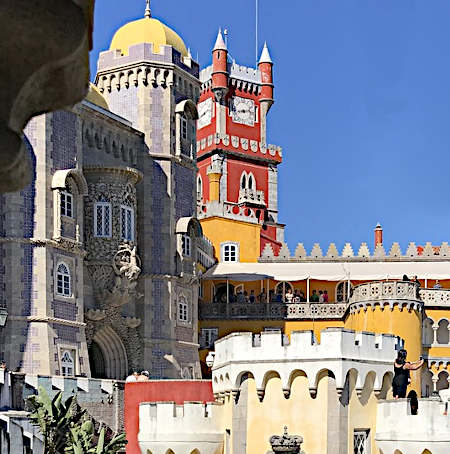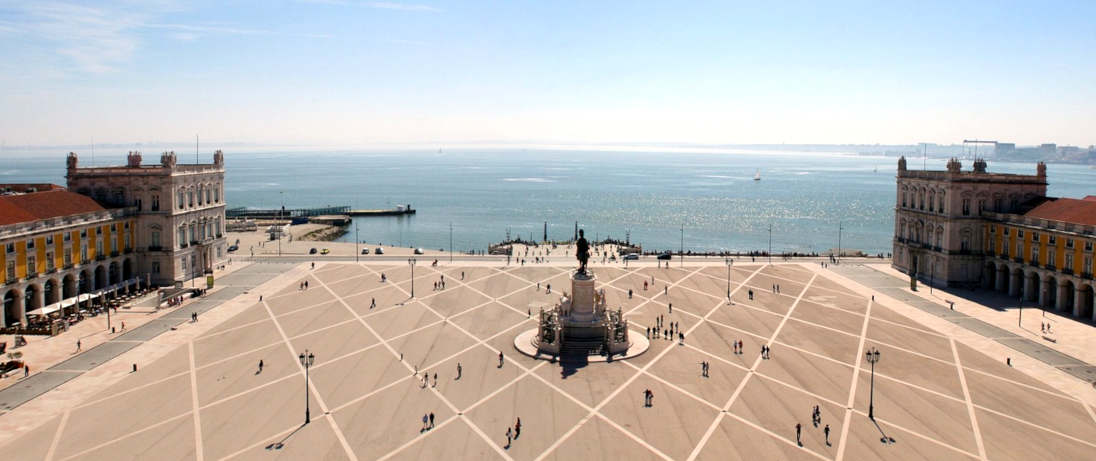 .
.Discover Lisbon, one of Europe's great historic capital cities and its most southerly capital after Athens.
Built beside a fine natural inlet and anchorage on Portugal's Atlantic coast, Lisbon is a capital city that enjoys clean air, a year-long mild climate, and a very attractive urban environment, making it one of the world's top ten most livable cities according to the 2023 Monocle Quality of life survey.
In an age when climate change is generating excessively hot summer days in much of southern Europe, Lisbon tends to avoid most of the excesses, cooled as it is by ocean breezes blowing in off the Atlantic.
Yet on November 1st 1755, Lisbon - along with most of the southern coast of Portugal, was struck by a devastating earthquake measuring 7.7 on the Richter scale. The quake, and the ensuing fires and tsunami, destroyed some 80% of the buildings in the old city and killed up to 20% of its population. History suggests that another major earthquake is due some time this century, and Lisboetas - the inhabitants of Lisbon - are very aware of this.
 The Belem Tower, a UNESCO
world Heritage site.
The Belem Tower, a UNESCO
world Heritage site.After the 1755 earthquake, the city was rebuilt with large squares and wide boulevards, and the rebuilding work overseen by the Marques of Pombal, who imposed innovative anti-seismic features in new buildings, notably timber frames to support all structures. Nowadays experts can generally tell when an earthquake is likely, and Lisboetas are well prepared for the event which will inevitably strike one day.
Visitors wanting to know more about the Earthquake can do so at Lisbon's newest major attraction the immersive Lisbon Quake experience, with its earthquake simulators and interactive visitor features. For a more sombre reminder of the earthquake, the ruins of the Carmo Convent stand as a stark reminder of the force that struck the city that fateful day in 1755.
 Exuberant Portuguese
neo-romanticism at Sintra's Pena Palace.
Exuberant Portuguese
neo-romanticism at Sintra's Pena Palace.While much of the city was destroyed in the earthquake, parts survived, and the rest was rapidly rebuilt, making today's city a great example of eighteenth century urbanism, with many older monuments, including two UNESCO World Heritage Sites, the Belém Tower and the Jerónimos Monastery, with its tombs of kings and queens, and of Vasco da Gama. Naturally, Lisbon also has plenty to offer in the way of museums and galleries, and a huge choice of places for wining and dining.
Among the city's museums, two that should not be missed are the Caloste Gulbenkian Museum, with a fabulous collection of art and artefacts including paintings by Rembrandt, Turner, Monet and Degas, and the National Museum of Ancient Art, which actually displays art and artefacts up to the 19th century including many works by Portuguese artists, but also a major collection of European art including works by Hieronimus Bosch, Dürer, Raphaël, Hans Memling, Tintoretto, Velázquez, Zurbarán and mny others.
In the Lisbon area
It is just a short drive or train ride from central Lisbon to reach the beaches at Carcavelos or Casceis, or the UNESCO World Heritage site of Sintra, with its 19th-century neo-romantic architecture, historic estates and villas, including the Peña Palace ( ► Click for online ticket sales) and the exuberant neo-romantic-gothic Monserrate. Sintra's landmarks include a remarkable section of Roman road and a small Roman bridge at Catribana, and the medieval Castle of the Moors, perched on a hilltop just south of the town.
To the east of Lisbon, the Tagus Estuary Natural Reserve is the largest river estaury in western Europe, and one of the world’s major migratory bird sanctuaries, famed for its flocks of pink Flamingos among other birds.


